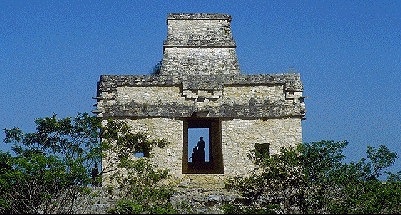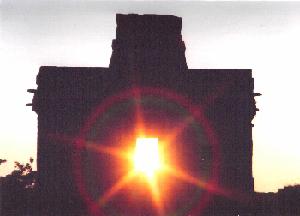| Chichén-Itzá |
| Palenque |
| Uxmal |
| Yaxchilàn |
| Tulum |
| Cobá |
| Dzibilchaltún |
| Teotihuacan |
| Tula |
| Home |
Dzibilchaltún was the center for salt trade since the Temple of the Seven Dolls. Dzibilchaltún was built around 200A.D. and was inhabited until the time of the Spanish Conquest. This site is home to a natural reserve, forests, cactus plants and palms. The city was discovered around 1540 but the only excavated structure was the Temple of the Seven Dolls (Templo de las Siete Muñecas). This temple is notable because it is the only Mayan Temple with windows and a tower, instead of a roof comb. Thousands of artifacts were found at the bottom of its well (cenote), the result of offerings made to the gods.

This site was part of the Upper PreClassic period (800-200BC). Small ceremonial centers were created, priesthood and formalized religion became established, as well as, marking of advances in scientific knowledge, astronomy, and technology. Settlements like Dzibilchaltún were rapidly being built in other areas.
